Menus
- object of desire
- Review Ferdinand Kaczor
- Portrait of Herbert Gletter
- Even seemingly impossible things become possible
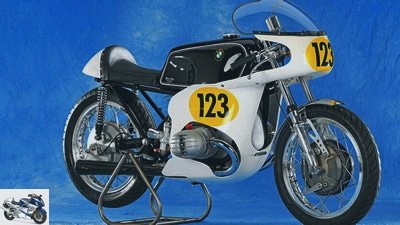
Bilski
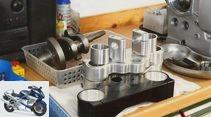
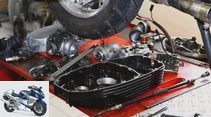
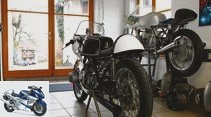
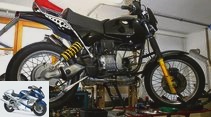
35 photos
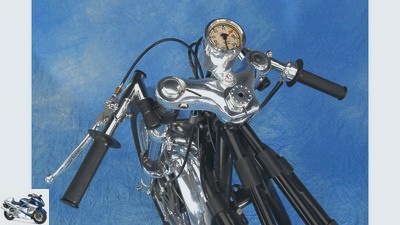
Bilski
1/35
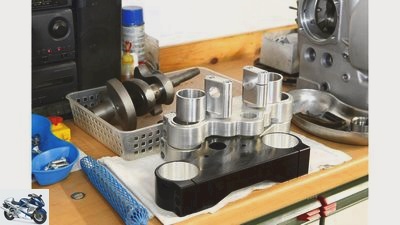
2/35
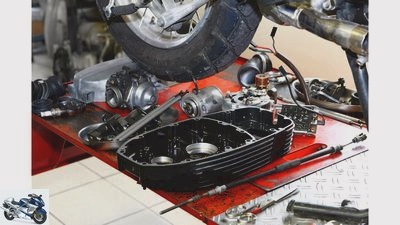
3/35
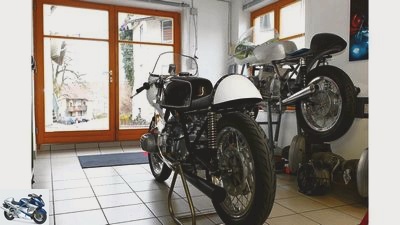
4/35
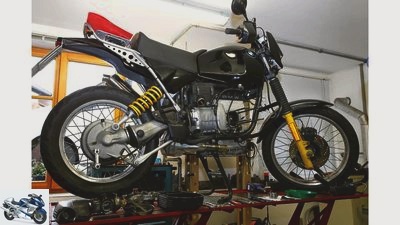
5/35

6/35
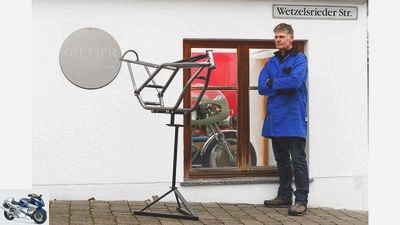
7/35
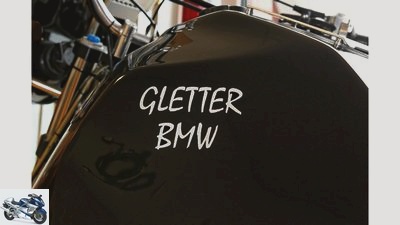
8/35
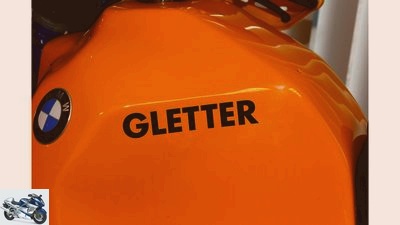
9/35
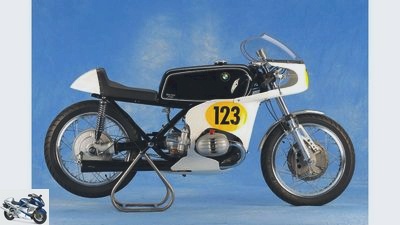
Bilski
10/35
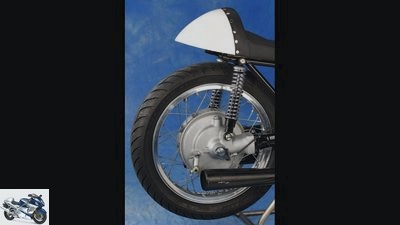
Bilski
11/35

Bilski
12/35
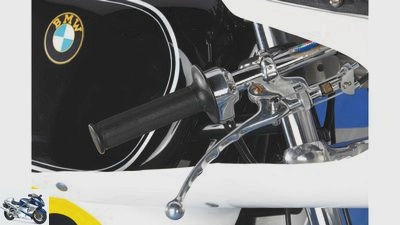
Bilski
13/35
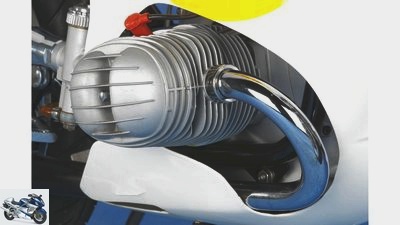
Bilski
14/35
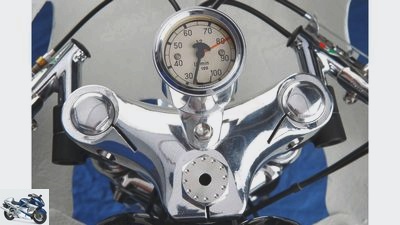
Bilski
15/35
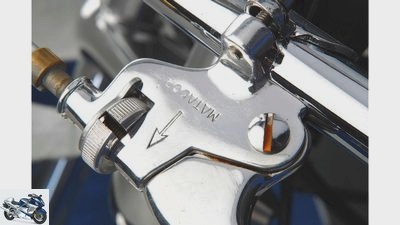
Bilski
16/35
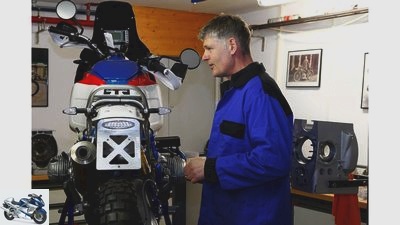
17/35

18/35
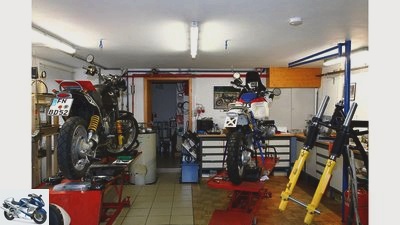
19/35
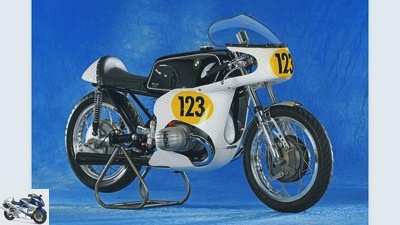
Bilski
20/35
Prize contender for the art of omission: the 138 kilogram Kaczor BMW.
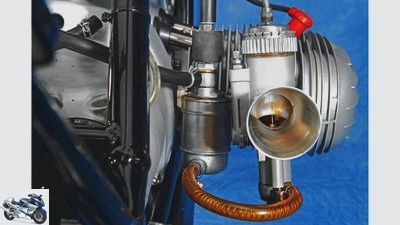
Bilski
21/35
Always a pleasure: the unobstructed view of the open Dellorto carburettors of the BMW boxer engine.
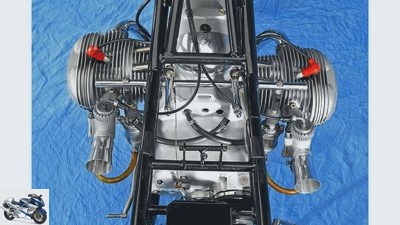
Bilski
22/35
Striking: the struts between the engine and the frame are not crossed.
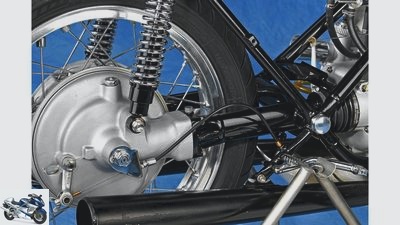
Bilski
23/35
Cardan drive problem: too heavy for a sports motorcycle and very time-consuming when changing the gear ratio.
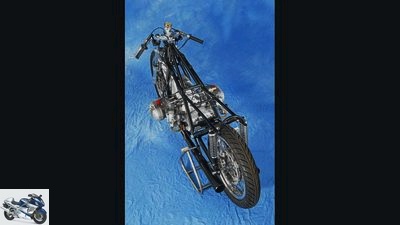
Bilski
24/35
Airy, light and yet stiff enough: Kaczor’s frame construction was simple but ingenious.
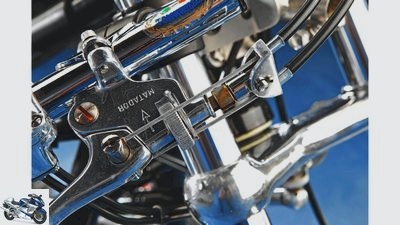
Bilski
25/35
Details such as this balance beam on the brake cables are evidence of craftsmanship and clever ideas.
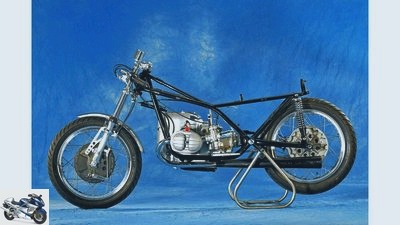
Bilski
26/35
Brilliantly implemented: the most direct possible connection between the steering head and swing arm bearing.
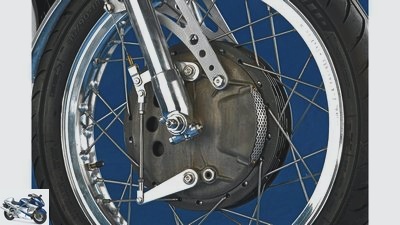
Bilski
27/35
Contemporary components replace the no longer existing originals.
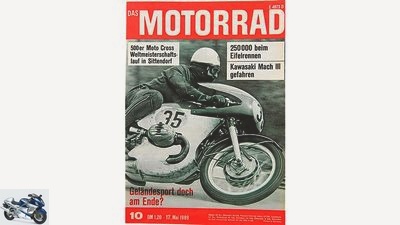
Hertler
28/35
After finishing second in the Eifel race, Kaczor is the title hero of “DAS MOTORRAD 10/1969”.
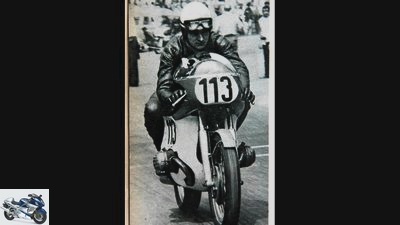
Hertler
29/35
Start of the Schauinsland Mountain Prize in Freiburg.
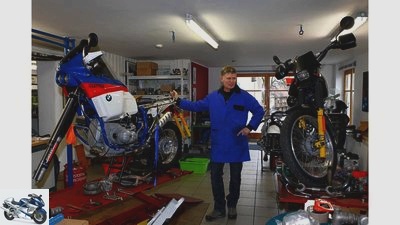
30/35
Whether Kaczor racing machine or long-legged GS boxer, Herbert Gletter has a heart for all Bavarian two-valve engines. And a knack for technically perfect solutions that are good for many veteran boxers.
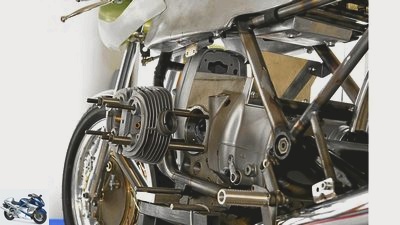
31/35
In the shell: This classic road racing machine is commissioned by a customer who can specify the equipment.
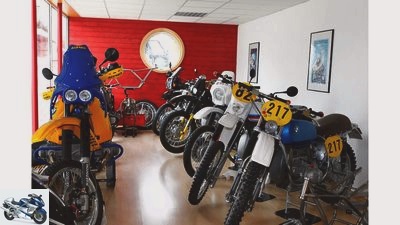
32/35
For the rough: Off-road sport is a tradition in the Allgau, the collection in the exhibition room is impressive.
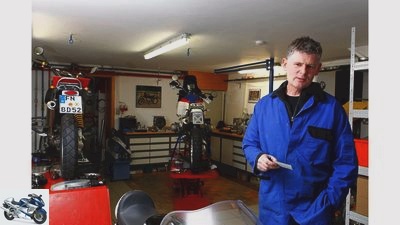
33/35
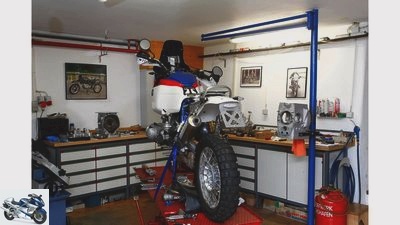
34/35
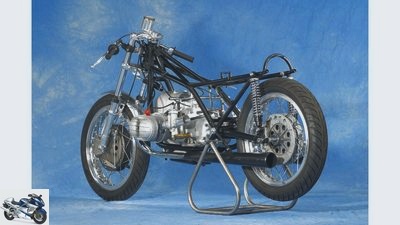
Bilski
35/35
Kaczor-BMW in the studio
object of desire
Content of
Talented, brave, quick. But Ferdinand Kaczor was not only a great master on the racing motorcycle, but also on the welding machine and lathe. His ideas and constructions became real milestones in the classical music scene.
KOpieren is part of the business in the classical music scene. And so I was not surprised when I stumbled across the black BMW on a leisurely tour of the Allgau. In the middle of the most beautiful bend break, my gaze falls on a small workshop in Ratzenried near Wangen. Brake on the brakes, 180-degree turn, my nose pressed flat on the shop window, I admire the object of desire. Aha, another replica of the Kaczor BMW. Hmm, but something is different here.
Buy complete article
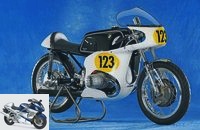
Kaczor-BMW in the studio
object of desire
Kaczor’s engines brilliantly trimmed
Back then it was not an easy time for motorcycle racers. If you wanted to be fast, you not only had to turn the gas tremendously, but also had to be a clever machinist. There were plenty of off-the-peg 500 cc racing bikes, from AJS to Norton to Velocette. But keeping the capricious engines on their toes required a mechanic who was able to tackle the pitfalls of technology with skill and the high art of improvisation. That the BMW squad could stand up to the fast production racers at all was a miracle. Originally with a heavy cardan drive and ohv valve control, tailored to everyday life and long journeys, the BMW drivers in the solo classes struggled with a lot of problems. It is all the more astonishing that Ferdinand Kaczor crossed the finish line at the height of his career at the 1969 World Championship race in Hockenheim, finishing 11th overall as the second best German driver behind Karl Hoppe on the four-cylinder URS.
In Hockenheim of all places, where there was only one position for almost three kilometers from the north curve to the east curve: full throttle. Thermal collapse for many single-cylinder racing engines at the time, the square boxer engines on the high-speed track with their expansive cylinders located directly in the air flow and around 55 hp mixed in tremendously. Certainly an advantage: the low overall height of the entire racing machine. But with Ferdinand Kaczor his talent and a fabulous chassis were added. The legendary MOTORRAD editor Ernst “Klacks” Leverkus raved about the fast Bavarian in downright euphoric hymns of praise. With his hand-stopped “section times” in the Motodrom infield, he attested the BMW test driver the second best time, only 1/10 of a second slower than Giacomo Agostini on the three-cylinder MV Agusta.
Possibly the secret of the Kaczor frame, which is highly praised by all BMW connoisseurs, lies in the simple fact that the smart inventor, contrary to the “feather bed principle” that was widely copied at the time, made his frame unusually rigid in the steering head area. The steering head is supported to the rear by two long struts, and a cross tube below the steering head prevents the frame tubes from widening when braking.
Back to the question asked at the beginning: Is this motorcycle the original or a copy? After thorough research and comparisons, owner and restorer Herbert Gletter is certain that the base of his beautiful BMW and engine was actually made by Ferdinand Kaczor. He should know, after all, the BMW specialist puts copies of the legendary BMW racer on the wheels for customers.
Review Ferdinand Kaczor
Hertler
After finishing second in the Eifel race, Kaczor is the title hero of “DAS MOTORRAD 10/1969”.
Regardless of which contemporary witness tells of “Ferdi”, everyone raves about his ingenious technical skill. “Ferdi even worked his camshafts by hand on the grinding machine,” says Helmut Dahne, who is still deeply impressed today. His driving technique was also unique at the time and made the son of a refugee family, together with his specialist Rupert Bauer, one of the fastest “boys”. After switching from a small two-stroke motorcycle to a BMW R 50, the trained fitter landed in a BMW test drive, where he was able to beat the lap record on the Nordschleife of John Surtees / MV Agusta in September 1969. The quiet and reserved Kaczor more than made up for the disadvantages of his 500 boxer BMW on difficult, but also extremely dangerous, routes. Whether at the Nurburgring-Nordschleife or at the Schauinsland, Kaczor was usually right at the front. On June 20, 1970, Ferdinand Kaczor, then 29, had a fatal accident while training in Ziersdorf, Austria.
Portrait of Herbert Gletter
Whether Kaczor racing machine or long-legged GS boxer, Herbert Gletter has a heart for all Bavarian two-valve engines. And a knack for technically perfect solutions that are good for many veteran boxers.
Boxer’s paradise is not easy to find. If only because Ratzenried – “off the beaten track”, but with the best view of the Bavarian Alps – can only be reached via winding streets. Anyone who has made their way to the small town belonging to the municipality of Argenbuhl should keep in the direction of Eglofs and turn right at the end of the village to “GLETTER Motorradtechnik”. There, the Allgau BMW specialist Herbert Gletter tinkers and designs all possible parts for the two-valve generations. As a boy he earned a few marks from the village mechanic, completed an apprenticeship as a car mechanic and then ended up a few kilometers further with the off-road sports legend Herbert Schek in Wangen.
After two instructive years, Herbert Gletter switched to the mechanical engineering division, passed the master craftsman’s examination and can now fall back on a solid training and a lot of experience. Because what Herbert Gletter offers in terms of conversion and optimization parts cannot be done with half-life technical knowledge. The best example: the extension of the swing arm for the one-armed boxer models. The welding in of the frame reinforcements for the GS enduros also requires a chassis that is precisely aligned with the frame gauge. Specialized in the off-road boxer, Herbert Gletter can of course also put together and build a very classic off-road BMW in the style of Herbert Schek. Motto: The main thing is BMW, whether it’s a classic racer or a GS boxer.
If you want to equip your GS for the big tour, you will definitely find it in Ratzenried. Huge tanks, reinforced rear frame made of VA steel, mighty upside-down forks with long suspension travel – Herbert Gletter also helps his customers through the desert.
Even seemingly impossible things become possible
For friends of the classic racing boxer, the replica frames based on the design by Ferdinand Kaczor are also created in the fine workshop, with which, if desired, even a screwed frame support with precisely fitting prismatic guides allows simple motor assembly. Even rare individual items such as the spick and span manufactured swing fork for one of the legendary vertical shaft RS 54 are designed and built in Ratzenried on request. Of course, all frames or swing arm constructions are cleanly TIG welded and then aligned.
In addition to the welded constructions, you can spice up your boxer with a whole range of Gletter milled parts. From the stable handlebar clamps to the filigree routing of the brake line, everything is on offer in the Allgau specialty company. And if not? No problem. Herbert Gletter also works out very individual technical solutions at affordable prices for his customers. Thanks to the extensive machinery and contacts to specialist companies in the area, even seemingly impossible things become possible. The author is still wondering how Herbert Gletter was able to extend the cardan shaft of his BMW R 80 G / S by a full 50 millimeters. Just weld a piece on? With a shaft diameter of just 20 millimeters – that breaks. But how then, here you go? Herbert Gletter shrugs his shoulders with a smile. Even his small business knows them, the great technical secrets.
Related articles
-
Artist 500cc racing boxer from the 1960s Kaczor-BMW R 50 The world was really excited, whether the Lo Rider recently conjured up by BMW. But a look at…
-
In the studio: The German Norton NSU 501 OSL
Bilski 12th photos Bilski 1/12 And the NSU carburetor. Bilski 2/12 The NSU 501 OSL in the horizontal view. Bilski 3/12 The finely crafted leather saddle….
-
In the studio: Ducati 750 Imola
archive 17th photos archive 1/17 Smart leads his teammate Spaggiari. In 1972 they drove the entire racing elite, including Giacomo Agostini, to the…
-
Bilski 18 pictures Bilski 1/18 telescopic fork, double disc in front … Bilski 2/18 Gille actually built the W3 for himself and did not have to worry about it …
-
Honda Dream 50 and Honda Dream 50 R in the studio
www.bilski-fotografie.de 22nd photos Bilski 1/22 For the 50th anniversary of the company, Honda made lovers of classic shapes a very special gift in…
-
Norton Manx F-Type replica in the studio
Bilski 17 pictures Bilski 1/17 One of the few photos that served as a template for the Norton Manx F-Type replica. Bilski 2/17 The “Norton-Franz” …
-
bilski-fotografie.de 12 pictures bilski-fotografie.de 1/12 Yamaha YAS-1 in the studio. bilski-fotografie.de 2/12 Spartan, but tidy: In the cockpit there is …
-
Yamaha XT 500 S: Enduro classics from Yamaha in the studio
Sdun 9 pictures Sdun 1/9 Yamaha XT 500 S. Sdun 2/9 The speedometer shows only 500 meters. And every single one of them is pushed honestly! Sdun 3/9 Real …
-
BMW R 100 CS (1983) in the studio
bilski-fotografie.de 13 photos bilski-fotografie.de 1/13 Timeless, classic elegance: the BMW R 100 CS in the studio. bilski-fotografie.de 2/13 Boxer at…
-
Hugh Anderson’s Matchless G50 in the studio
Jacek Bilski 11 photos Jacek Bilski 1/11 The ex-racer of the New Zealand four-time world champion Hugh Anderson has come a long way – today the Matchless…